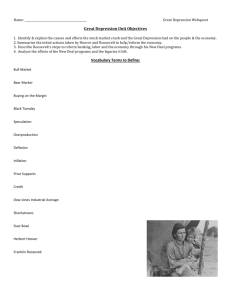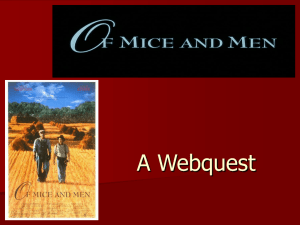AMH Chapter 11 Section 2
advertisement
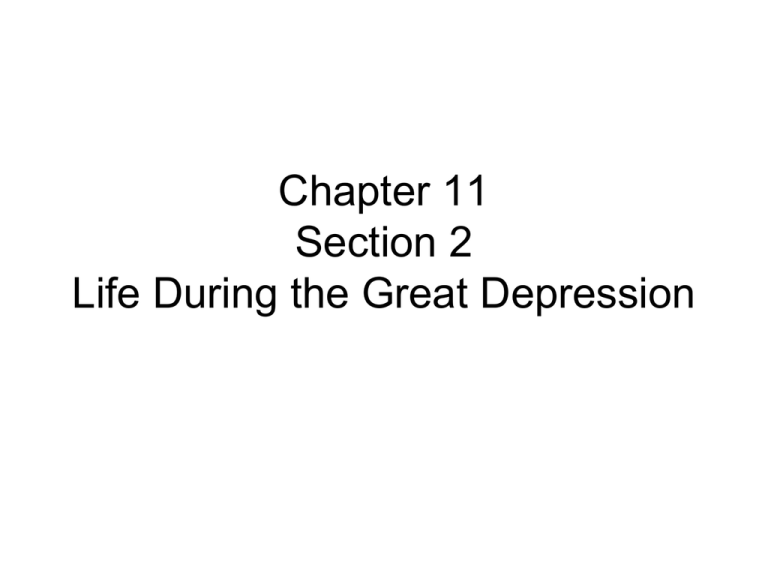
Chapter 11 Section 2 Life During the Great Depression Bad Times • The Depression grew worse during Hoover’s administration. • Thousands of banks failed, and thousands of companies went out of business. More Bad Times • Millions of Americans were unemployed. • Many relied on bread lines and soup kitchens for food. • In 1932 alone, some 30,000 companies went out of business. Losing Homes • Many people could not afford to pay their rent or mortgage and lost their homes. • Court officers, called bailiffs, evicted nonpaying tenants. Hoovervilles • Throughout the country, newly homeless people put up shacks on unused or public land, forming communities called shantytowns. • Blaming the president for their plight, people referred to these shantytowns such places as Hoovervilles. Hobos • Some homeless and unemployed people wandered around the country. • Known as hobos, they traveled by sneaking onto open boxcars on freight trains. Farming • Great Plains Farmers soon faced a new problem. • When crop prices decreased in the 1920s, farmers left many fields unplanted. • In 1932, the Great Plains experienced a severe drought. Dust Bowl • The unplanted soil turned to dust. • Much of the Plains became a Dust Bowl. • From the Dakotas to Texas, America's wheat fields became a vast “Dust Bowl.” Heading West • Many families packed their belongings into old cars or trucks and headed west , hoping for a better life in California. • Still, many remained homeless and poor. Movies • Americans turned to entertainment to escape the hardships of the Depression. • During the 1930s, more than 60 million Americans went to the movies each week, which features child stars such as Shirley Temple who provided people with a way to escape their daily worries. Comedians • Millions of people listened to comedians such as Jack Benny, George Burns, and Gracie Allen. Disney • Americans also enjoyed cartoons. Walt Disney produced the first feature-length animated film in 1937. Even films that focused on the serious side of life were generally optimistic. 1939 Movies • Two movies from this period were The Wizard of Oz and Gone with the Wind, both produced in 1939. • Gone with the Wind is a Civil War epic that won nine Academy Awards. One went to Hattie McDaniel, who won Best Supporting Actress. She was the first African American to win an Academy Award. Radio • Americans also listened to the radio. • They listened to news, comedy shows, and adventure programs like The Lone Ranger. Soap Operas • Short daytime dramas were also popular. • These radio melodramas were often sponsored by makers of laundry soaps, causing the shows to be nicknamed soap operas. Arts (Writers & Painters) • During the Depression, artists and writers portrayed the life around them. • Art and literature in the 1930s reflected the realities of life during the Depression. • Painters such as Grant Wood showed traditional American values, particularly those of the rural Midwest and the South. • His painting American Gothic is one of the most famous American works of art. John Steinbeck • The writing of novelists such as John Steinbeck evoked sympathy for their characters and indignation at social injustice. • Steinbeck wrote about the lives of people in the Depression. Grapes of Wrath • In The Grapes of Wrath, Steinbeck told the story of an Oklahoma farm family who fled the Dust Bowl to find a better life in California. • He based his writing on visits to and articles about migrant camps in California. William Faulkner • Some writers during the Depression influenced literary style. • In a technique known as stream of consciousness, William Faulkner showed what his characters were thinking and feeling without using conventional dialogue. • Faulkner explored the issue of race in the American South. Life Magazine • Photographers traveled around the nation taking pictures of life around them. • In 1936, magazine publisher Henry Luce introduced Life, a weekly photojournalism magazine that enjoyed instant success and showcased the work of photojournalists, such as Dorothea Lange and Margaret Bourke-White, who documented the hardships of the Great Depression.
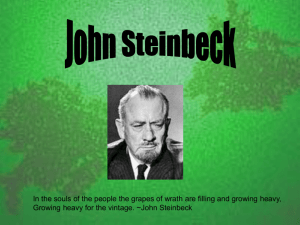
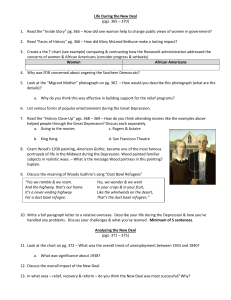
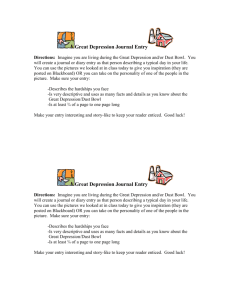

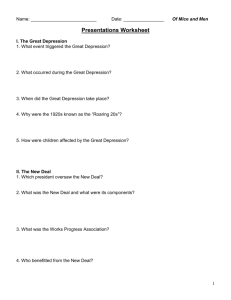
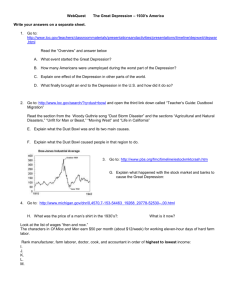


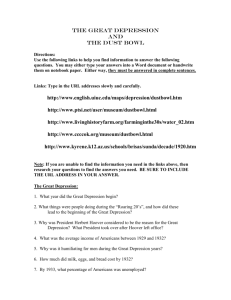
![Historical_politcal_background_(intro)[1]](http://s2.studylib.net/store/data/005222460_1-479b8dcb7799e13bea2e28f4fa4bf82a-300x300.png)
